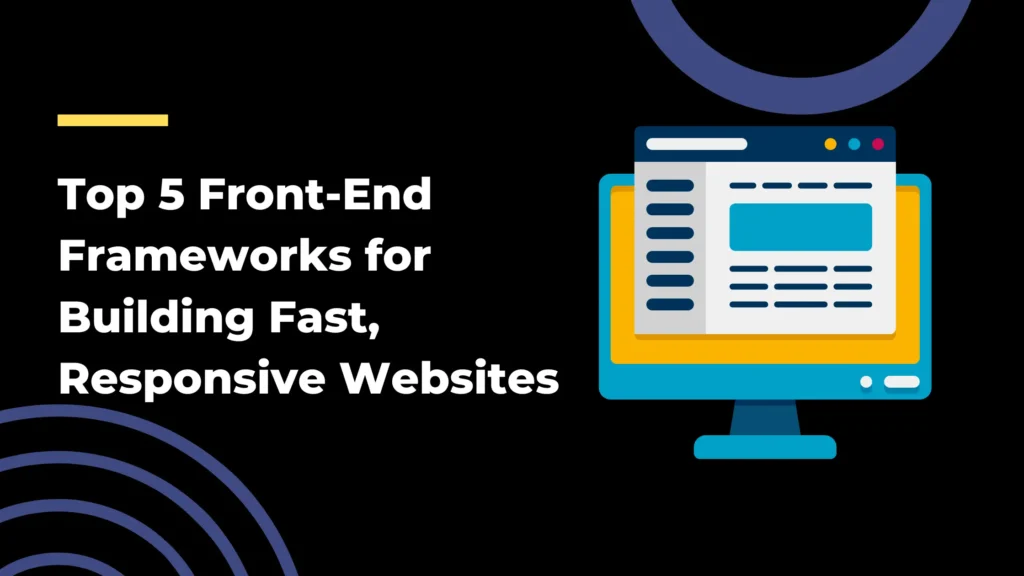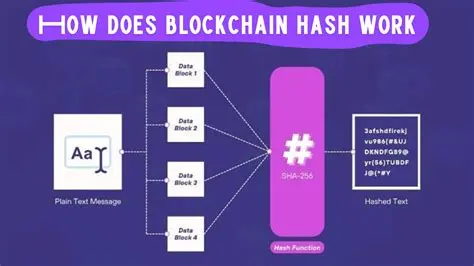Front-End Frameworks: In today’s digital environment, speed and responsiveness are critical to a website’s success. A fast, responsive website not only improves the user experience, but also improves search engine rankings, driving more traffic. The front-end role plays a key role in achieving these goals by providing the tools and templates to create great websites. Create a responsive website that will keep your website competitive and efficient.

Table of Contents
Toggle1. React: Fast and Scalable
Created and maintained by Meta (formerly Facebook), React is a front-end frameworks known for its performance and flexibility. It uses component-based design, which allows developers to break down the user interface into reusable components. This approach speeds up development while keeping the foundation manageable. This optimizes rendering by updating only the necessary parts of the web page, resulting in faster load times. React also has strong community support, which means constant updates, rich resources, and many third-party libraries to continue its work.
SEO Advantages of React:
- Faster load times are guaranteed by React’s compatibility with server-side rendering (SSR), which is essential for SEO.
- Additionally, it permits dynamic content changes, which enhance the interactivity and engagement of your website.
Use Cases:
- Websites that are dynamic and interactive, such as social networks, e-commerce sites, and content-rich websites.
- Websites that need to be updated often or in real time.
Reference: React Official Website
2. Vue.js: Lightweight and Versatile
Vue.js is famous for offering an easy learning curve and being developer-friendly when compared to other frameworks. Vue is flexible and can be easily integrated with existing projects or used in a full single page application (SPA). Its core library focuses only on the visual layer, but its ecosystem also supports advanced features like state management and behavior sheets. Vue’s two-way data binding makes it easy to manage user input, increasing the interactivity of your website.
SEO Advantages of Vue.js:
- Quick rendering times result in faster page loads, which is essential for higher search engine rankings.
- Because of its support for progressive enhancement, your website can continue to work normally even if JavaScript is disabled.
Use Cases:
- Smaller websites or web apps that need to be flexible.
- Projects that require integration with pre-existing solutions or other libraries.
Reference: Vue.js Official Website
3. Angular: Robust for Large-Scale Projects
Developed by Google, Angular is the most powerful and usable framework for large-scale, multi-purpose applications. Angular stands out with its TypeScript-based architecture that gives developers more efficiency, flexibility, and control. Write code as you build for faster rendering and shorter load times. Although Angular actually uses the DOM, its high performance makes it a strong contender for high-performance websites.
SEO Advantages of Angular:
- Angular Universal’s server-side rendering is integrated into the design to enhance page speed and crawlability.
- A highly organised framework that improves the organisation of code, leading to a cleaner and faster website.
Use Cases:
- Applications at the enterprise level that demand strong functionality.
- Websites with a lot of user involvement and sophisticated functionality.
Reference: Angular Official Website
4. Svelte: Lean and Efficient
Svelte is a modern interface that changes the performance game. Unlike React or Vue, Svelte doesn’t rely on a virtual DOM. Instead, it shifts most of the work to the design phase, allowing for smaller pieces and faster shipping times. Be faster and more responsive. This approach reduces dependencies and requires minimal user input, making it ideal for sites that need to load quickly and provide a great user experience.
SEO Advantages of Svelte:
- Page speed and SEO are directly improved by the faster runtime and fewer JavaScript bundles that result from the absence of a virtual DOM.
- Because it supports static site generation (SSG) and server-side rendering, Svelte is quite flexible for SEO requirements.
Use Cases:
- websites that are optimised for speed and performance.
- Projects that demand quick loading times and tiny file sizes.
Reference: Svelte Official Website
5. Bootstrap: Responsive by Design
Bootstrap is one of the most widely used front-end frameworks, especially known for its pioneering work. While it is not a JavaScript framework as others have said, it provides a great foundation for building responsive websites. Bootstrap’s grid system and extensive library of pre-built components make it easy to create fast, mobile-friendly websites. However, it is the best choice for small websites or projects that require responsiveness and simple design.
SEO Advantages of Bootstrap:
- Fast page loads are ensured by Bootstrap’s lightweight CSS, which is crucial for mobile-first indexing.
- Because mobile performance is given priority by search engines, websites that adopt the mobile-first approach tend to rank higher on Google.
Use Cases:
- Quick creation of websites that are responsive.
- Smaller projects where responsiveness and design take precedence over intricate functionality.
Reference: Bootstrap Official Website
Conclusion: Front-End Frameworks
Choosing the right frontend is crucial to creating a website that not only performs well but also ranks well in search engines. React and Vue are great options for building fast, responsive websites, while Angular is better suited for larger applications that require complex functionality. Svelte offers a new approach with low overhead that is perfect for high-performance websites. Finally, Bootstrap remains the first choice for projects that focus on fast, responsive design. The right process will ensure that your website not only looks good, but also ranks well and provides a good experience on all devices.
Additional Resources: Front-End Frameworks
Chckout other blogs:



